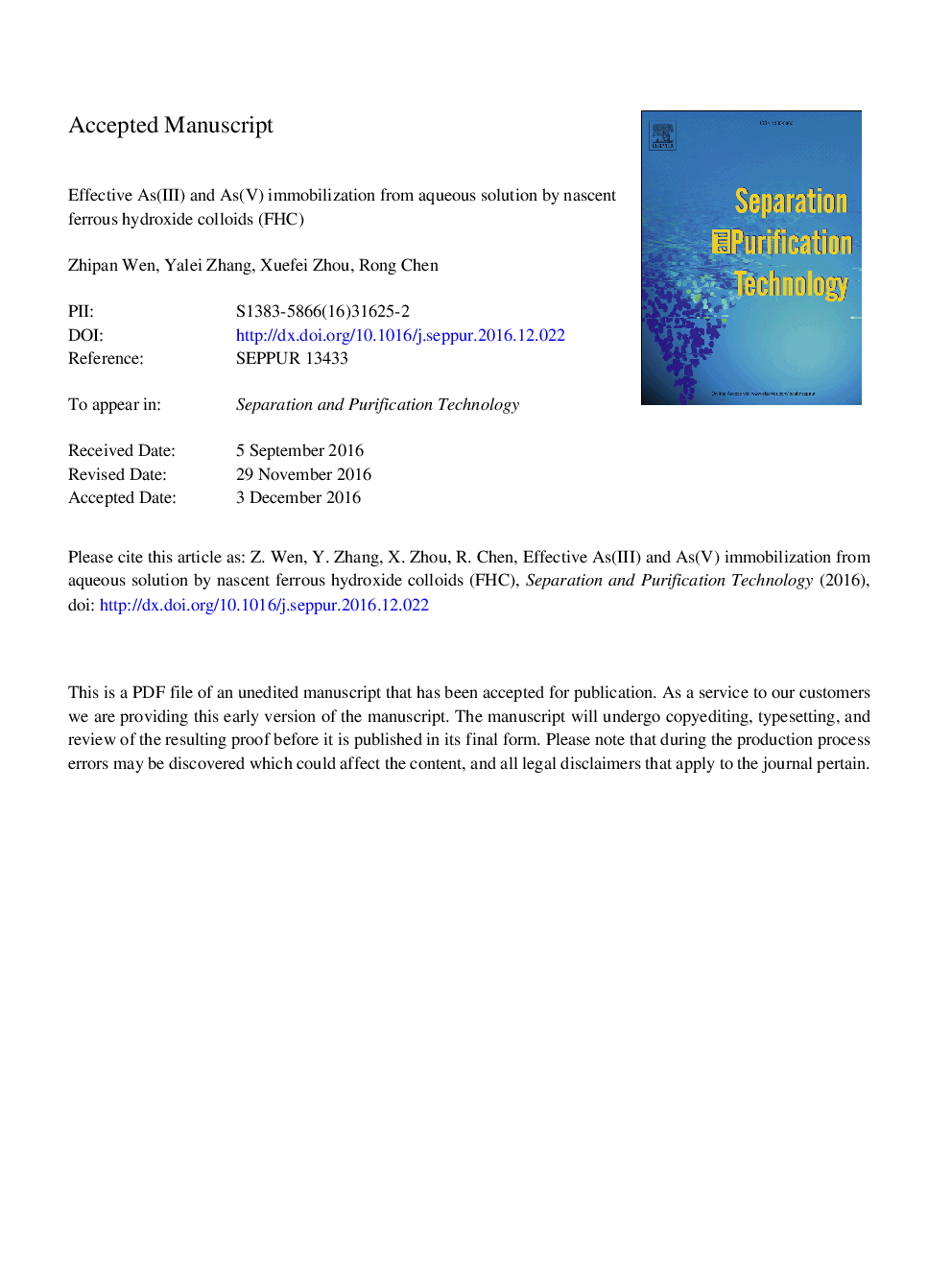| Article ID | Journal | Published Year | Pages | File Type |
|---|---|---|---|---|
| 4990259 | Separation and Purification Technology | 2017 | 28 Pages |
Abstract
In this study, the freshly prepared nascent ferrous hydroxide colloids (FHC) were used to eliminate two kinds of inorganic arsenic and simultaneously explore the arsenic speciation in aqueous phase and solid phase interface. The result indicated that when FHC maintained at a lower dosage (5-80 mg Fe/L), the As(III) removal efficiency was greater than that of As(V), which was consistent with the conclusion drawn from the maximum adsorption capacities by the Langmuir model (As(III) and As(V) were 122.63 mg/g Fe and 103.26 mg/g Fe, respectively). Furthermore, HPLC-ICP-MS and XPS analysis from liquid-solid two phase indicated that part of As(III) could be quickly oxidized into As(V) (approximately 5 min), while no As(V) was reduced to As(III) even under the longer reaction time (10 days). This redox transformation behavior of arsenic caused by the mineral transformation of nascent FHC, which formed secondary Fe(II)-Fe(III) (hydr)oxides minerals (newly formed Fe3O4 phase in situ). These results revealed that the nascent FHC have greatly potential practical application in arsenic contaminated groundwater, especially for As(III) removal directly without a pre-oxidation step.
Related Topics
Physical Sciences and Engineering
Chemical Engineering
Filtration and Separation
Authors
Zhipan Wen, Yalei Zhang, Xuefei Zhou, Rong Chen,
